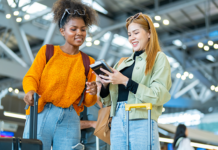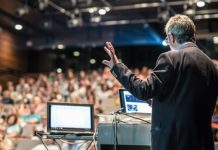Snow and ice accumulation can be dangerous for workers if managing exposures are not planned for and handled correctly. Elevated surfaces, such as structures, decks, and roofs, can become overloaded and even collapse under the weight of snow and ice. To manage this, employees often climb onto these areas to remove snow and ice, which can result in injuries and fatalities if a worker falls off roof edges, through skylights, and from ladders and aerial lifts.
According to OSHA, falls are the leading cause of worker death and injury during rooftop snow removal. Before removing snow or ice from elevated surfaces, employers must consider the following:
- Plan to remove ice or snow without workers directly accessing the area. This means using draglines or long-handled, non-conductive snow rakes from the ground. Aerial lifts can also be used to apply de-icing materials or remove snow without directly accessing the area. Ladders are a last resort as they can be just as dangerous to fall from as a roof or deck. If you must use a ladder to access elevated areas, a comprehensive ladder safety program must be in effect. Ladders must also be secured at the top to a rigid support to prevent the ladder from slipping. Do not use snow rakes or shovels on ladders.
- If snow or ice-covered areas will be directly accessed, a competent person who can recognize and immediately address hazards must be designated to assess hazards before work begins. Hazards include load bearing on the roof or structure and dangers hidden by snow such as skylights, power lines, and HVAC or chemical lines that could rupture if struck. Maintain ten feet from any power lines.
- A fall protection program must be in effect for elevated work on ladders, aerial lifts, unprotected leading edges, and roofs. Fall protection consisting of guardrails or a personal fall arrest system will be needed for walking & working on surfaces four feet or higher above a lower level or six feet or more for construction, as per OSHA 1910.28(b) and 1926.501(b), respectively.
- Train workers to identify fall and electrical hazards, proper use of ladders, aerial lifts, and PPE based on manufacturers’ guidelines. In addition, workers need to be trained and coached on the snow removal methods mentioned above, such as removing small amounts of snow from the ground using a rake to prevent strains and too much snow from coming down at once.
- Maintain a safe zone where ice and snow are expected to fall (about ten feet). Workers must wear eye and head protection due to falling ice when working at ground level to remove ice from elevated structures.
Of course, there’re also hazards when dealing with ice and snow on the ground. Every year, slips and falls on icy walking surfaces are a leading cause of workplace injuries during the winter months. Just as the weather is monitored for excessive heat conditions, adverse weather that would bring ice and snow should be monitored as well so snow removal staff is ready.
Snow removal planning and procedures
- Mechanical equipment like snow blowers and plows is preferred over manually shoveling snow and ice.
- Train employees on the proper use of snow removal machinery, equipment, and de-icing chemicals.
- If shoveling is necessary, provide “bent handle” ergonomically favorable snow shovels that reduce bending and back strain while shoveling snow.
- Do not allow workers to overly exert themselves. Workers involved in shoveling and de-icing tasks should take allotted breaks to rest, warm up and stay hydrated and nourished.
- Ensure these employees are fitted with proper personal protective equipment such as snow and ice cleats, reflective vests, safety glasses, and layers of cold-weather clothing.
- Maintain a log of problem areas and walkways where water may pool, freeze, and cause black ice.
- Place non-skid runners and floor mats in entrance areas that are long enough to remove mud and ice from shoes.
- Use signage and warning cones in areas to warn pedestrians.
Resources to help you remove snow and ice safely
OSHA has additional information on safely removing ice and snow. Need assistance with your fall protection program? ICW Group offers a Fall Protection OSHA Program Template that you can utilize to document your current policies. Use the Fall Protection Program Audit to ensure your program is best in class and includes the required elements to protect your employees.
If you have any questions or need assistance with creating a plan or procedures for snow and ice removal, please contact ICW Group’s Risk Management Services, and we’ll be happy to assist you.

















